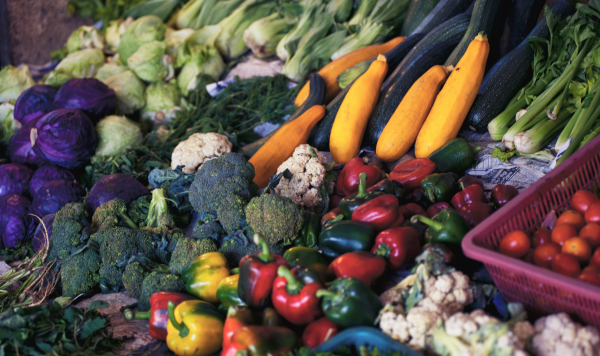For the best part of this century the capitalist economic model, has depended on a make-use-discard model. Success is measured by growing sales and creating a consumer need for short-life or single-use, disposable products. This model depends on repeat sales, cheap materials and poor management of resources with no thought about their end-of-life.
Everything that we buy, use and discard has a carbon footprint and carbon is a major contributor to global heating. There’s been a lot of content dedicated to carbon emissions, but they are rarely talked about in connection to the way we consume products. For example, if a pair of new trainers releases 30 lbs of carbon dioxide into the atmosphere and a consumer buys a fresh pair every season rather than when they’ve been used to the point where they need replacement (or ideally repair) that will inevitably release more carbon in the atmosphere than if production existed to only meet demand. If the business model of a given company is to sell more products every quarter, whether people need them or not, then they will aim to grow sales to increase their revenue year or year. Therefore the more products are produced, the more C02 is released in the atmosphere which fuels the buy-use-discard process.
So, what is the circular economy?
You’d be forgiven if you didn’t know what the term “circular economy” meant. You might even be shocked to know it doesn’t really exist yet.
A circular economy is a system that plans for where a product will end up before it is produced and focusses on overall efficiency and reduced consumption. Several companies and charities campaign for a more circular economy, but at the moment, it’s more theory than practice. Some have even argued against it altogether.
So, what would it take to create a truly circular economy, and can it be achieved?
There’s lots of information online about what circular economy means. This Lombard Odier article simply breaks it down into 10 steps or “Rs”:
1. Refusing to buy unnecessary or unsustainable products.
2. Rethinking environmental impact during production.
3. Reducing industrial waste by smarter manufacturing.
4. Reusing what is already out there.
5. Repairing what we already own and outlawing planned obsolescence.
6. Refurbishing old products and updating them to modern standards.
7. Remanufacturing parts of existing products into new ones.
8. Repurposing objects into new ones by upcycling them.
9. Recycling far more than we’re doing now.
10. Recovering as much use from waste as possible, such anaerobic digestion or energy extraction.
In short, the circular economy requires a shift from our current mindset to one that is less focussed on consumerism and about more thoughtful purchasing and ownership. This means designing products by thinking of the end of their lives first, and by using materials that are either recyclable or reusable. It would also mean using materials we already have and viewing them as a resource, rather than “worthless” waste.
Outside the box thinking
This new approach will mean instead of trying to own things, we can use and possess them temporarily. This could come in the form of hiring rather than buying. So that when our “new” washing machine reaches the end of its life, it’s up to the manufacturer to repair or even replace it and take it away to be refurbished for the next user, rather than leave it to be disposed of. This would require the manufacturer to bear the responsibility for the entirety of a product’s lifetime.
The same could be applied to vehicle ownership. Why have a car that sits in the driveway for most of its life when you could share or borrow one when it’s needed? This would also dramatically reduce pollution, congestion and material shortages.
Though we are nowhere near a widespread circular economy model, there are a number of innovators, charities and companies who are embracing it in the hope of moving towards true global sustainability. This would help us reduce global heating, and continue to live on this planet without harming ecosystems. In order for things to change the majority the companies that generate most emissions will need to change their production methods and business models.
Can a circular economy be achieved?
A genuinely circular economy is not going to be an overnight thing. It will require both a new way of thinking and a massive infrastructure change on the part of the world’s governments.
Under the current model, if fewer products are made, sold or imported, governments make less from tax revenues. If just one country tries to force companies to change, those companies will move to countries that do not have restrictions.
We need to get creative and find a way for companies and governments to survive without simultaneously depleting the planet. Though it can be tempting to only think about the here and now, the time to make a difference is quickly running out.


